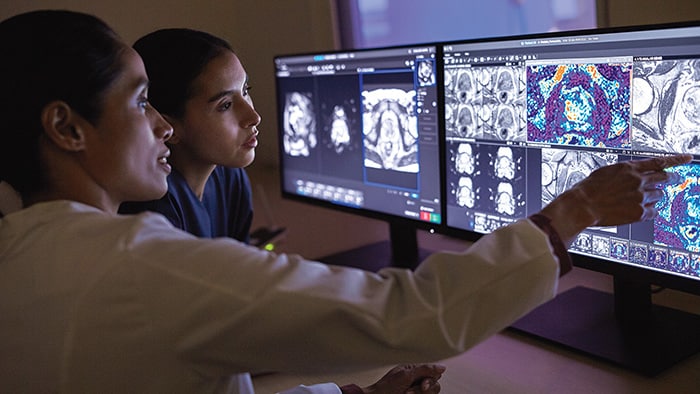Workforce shortages have put healthcare professionals under more pressure than ever before. Nowhere is this more apparent than in radiology, with radiologists ranking among the most burned-out specialists in a 2023 Medscape survey [1]. Radiology leaders have also raised alarm that labor shortages are leading to longer wait times and delays in treatment for patients [2]. Never has there been a bigger need to give radiologists and imaging staff back what they lack the most: time.
When I started working as a neuroradiologist in 1996, a CT examination of the brain consisted of 20 images. When, 15 years later, I transitioned from clinical practice to focus on driving digital innovation in healthcare, that number had risen to 1,200 – a 60-fold (!) increase. This remarkable explosion of data enabled me and my peers to diagnose conditions with more precision than ever before. But it was also an undeniable source of data overload. We didn’t have more time per study, nor had our workflows evolved at the same speed to support the efficient interpretation of so many images.
What this points to is a fundamental asymmetry in radiology innovation. On the one hand, we have seen spectacular advancements in medical imaging technology – and it really is astonishing how innovations in MR, CT, ultrasound, and other modalities can now help radiologists obtain incredibly detailed and precise images of the human body. But on the other hand, radiology departments often lack the time and resources to manage the growing deluge of data and technological complexity – especially as they are running into the limitations of workforce shortages. To put it simply: radiology workflows have not kept up with the pace of imaging innovation.
Addressing this asymmetry is what can help offer a way out of the radiology burnout crisis. It also aligns with what I’m hearing from customers. Ten years ago, they were primarily interested in the technical specifications of the latest imaging equipment. Today, their focus is on optimizing workflows to arrive at a faster, more accurate diagnosis. Radiology leaders are not looking for more pixels. Their focus is on how they can empower radiologists and staff with the right capabilities and insights to help them serve more patients more quickly. And for patients, time is of the essence too: it can mean the difference between cancer being caught at an early stage when it’s still treatable, versus it progressing undetected to an advanced and potentially life-threatening condition.
That’s why we need to increase the pace of workflow innovation in radiology. It’s a prime focus of our sharpened strategic focus at Philips, with the launch of the industry’s largest enterprise informatics business earlier this year. Our goal in radiology? To help reduce the time to diagnosis, without compromising on quality.
Let me give you five tangible examples of what that looks like and how it can benefit physicians, staff, and patients alike – starting at the point of image acquisition.
